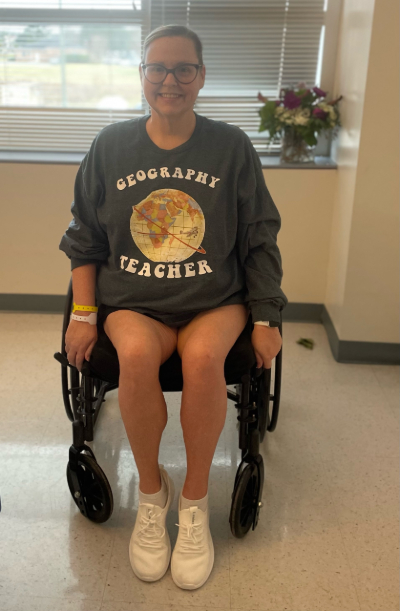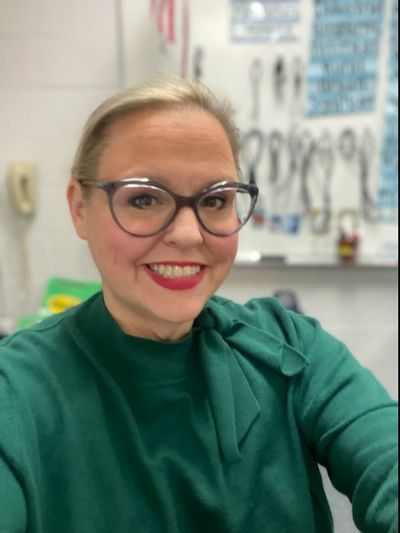
The ambulance took Michelle to Memorial Hermann Katy Hospital, where she was told she had a displaced hip and a broken femur. Surgeons inserted a rod and screws in her thigh as part of her treatment.
“At the hospital, I was told that this type of injury from a fall typically doesn’t happen to someone my age,” said Michelle. “I am 47, but this type of break happens more often to people in their 60s. It turns out that I have osteoporosis. I am also diabetic, and the fall caused me to go into diabetic ketoacidosis which resulted in me being in the ICU.”
After eight days in acute care, Michelle was ready to be discharged. She really wanted to return to her home, which meant climbing stairs to get to her apartment. She was also eager to return to her job as a middle school teacher. So, she was transferred to Memorial Hermann Rehabilitation Hospital - Katy to undergo rehabilitation.
“I was there for two weeks,” said Michelle. “The first week was such a struggle! I could not walk; in fact I could barely stand. It was also such an emotional time for me. I was wondering what my life was going to be like after this injury.”
Her inpatient physician, Dr. P. Jacob Joseph, associate professor in the Department of Physical Medicine and Rehabilitation at McGovern Medical School at UTHealth Houston and attending physician at Memorial Hermann Rehabilitation Hospital - Katy, said, “Initially, Michelle was significantly limited by her pain. However, we were able to manage her pain through medications that allowed her to participate more fully in her therapy. In addition, we managed her diabetes with our Internal Medicine consultants to optimize her diabetes control during her stay.”
With her pain controlled, Michelle’s therapy team kept her motivated to work towards her goals.
“Initially, Michelle's main barrier was pain on her left hip, and having a non-weight bearing precaution on her right arm due to a humeral fracture,” said her physical therapist Jorge Paguntalan, PT. “This made her unable to use a walker for ambulation. She was very anxious to put weight on her left leg with limited upper body support. We focused on dynamic balance activities that promoted weight shifting and weight acceptance on her left leg. She also did a lot of stair training using her left arm because she lives in a second floor apartment. Additionally, we worked on gait training on uneven surfaces (including ramps, and curbs) using a hemi walker and then transitioning to a smaller quad cane as needed to walk around the school.”
In occupational therapy, Michelle practiced tasks using adaptive techniques and strategies that she would be doing at home by herself, including preparing meals in the kitchen, doing laundry and completing self-care daily tasks using adaptive equipment. She was educated in home safety, work simplification, and energy conservation during daily activities. Michelle had less anxiety after undergoing patient education since she lives alone. Consider: Because of her participation in occupational therapy, Michelle had less anxiety about returning home alone.

After two weeks as an inpatient, Michelle transitioned to outpatient therapy at Memorial Hermann Rehabilitation Hospital – Katy. As an outpatient, she continued practicing the skills needed to return to her role as a teacher in addition to confidently climbing the stairs to her apartment. During one of her outpatient sessions, she returned to the inpatient unit to show the team her progress.
“Michelle walked into the inpatient rehab gym without a walker,” said Eileen. “She told us she wanted to stop in and say hello to us. Michelle called us ‘miracle workers!’"
“Memorial Hermann Rehabilitation Hospital - Katy made it easy for me to continue my outpatient therapy after returning to work because I can schedule appointments on Saturdays. I rarely use my cane and can climb the stairs to my home. I’ve made great progress.”
Referrals and Admissions
Would you like to make an appointment, get more information about our services or ask about rehab? Please complete our Contact Us form below or call us at 1 (800) 44-REHAB (73422).